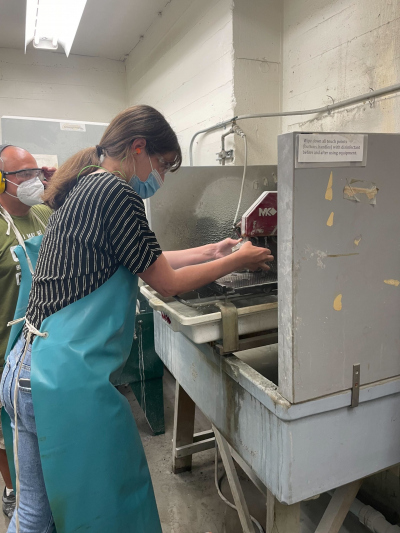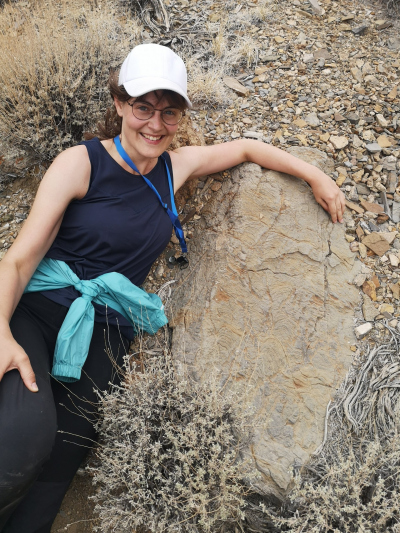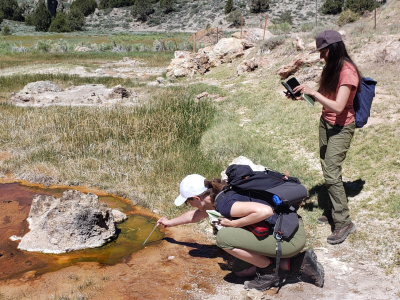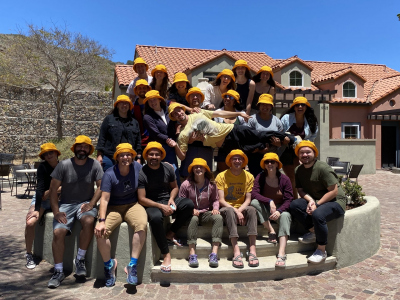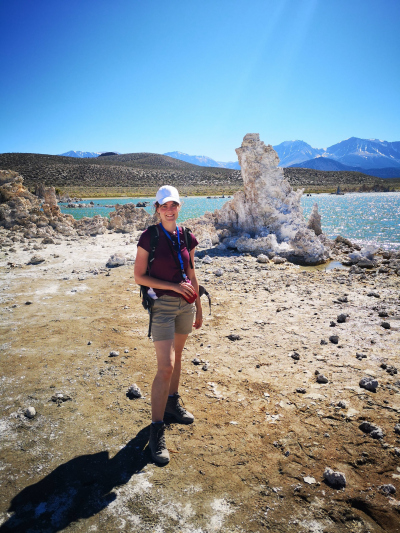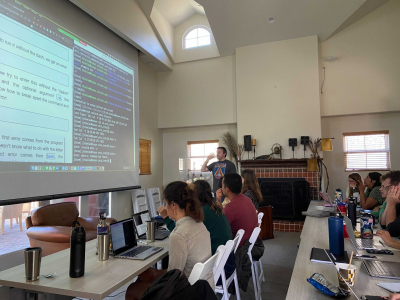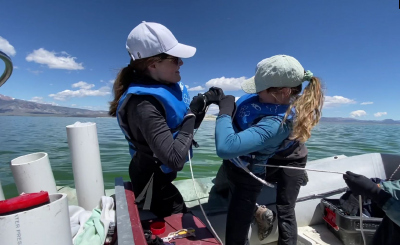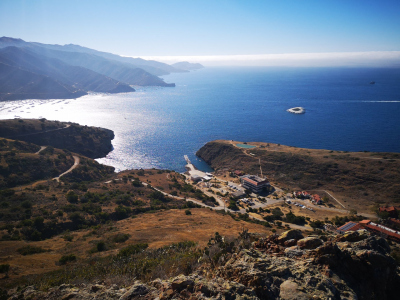- Graduate School GLOMAR
- PhD student reports
- Other activities
- Janina Groninga
Janina Groninga
Report of GLOMAR PhD student Janina Groninga about her participation in the Geobiology course offered by the California Institute of Technology (CALTECH), USA from 12 June to 19 July 2022
For many years, the California Institute of Technology has hosted the 5-week-long, interdisciplinary, and well-renowned Geobiology training course, where 16 Ph.D. students from around the world and diverse scientific backgrounds can exchange. I am incredibly grateful that GLOMAR enabled me to be a part of it.
From June 12 to July 19, 2022, the leading instructors, Prof. Dr. Alex Sessions, Prof. Dr. Victoria Oprhan, Prof. Dr. Russel Shapiro, Prof. Dr. Woody Fisher, and Dr. John Magyar guided us through the fascinating geological history of California, allowed us to work on cutting-edge instruments at Caltech and develop our own research projects.
The course started with a 14-day field trip to Mammoth Lakes near the Eastern Sierra Nevada. From the small city of Mammoth Lakes, we spread out to various geological gems within the area. Some field trip highlights were hydrothermally active Little Hot Creek, the Wilson Creek Formation, where we drew stratigraphic columns, and the Ediacaran stromatolites of the Deep Spring formation at Mt Dunfee (Nevada). However, the primary focus of the field trip was the hypersaline and alkaline Mono Lake, whose sediment and water samples provided the basis for the final course projects. At Mono Lake, I was also given a chance to collect a sediment gravity core with my own hands for the very first time.
Furthermore, we had the opportunity to conduct high-resolution elemental analysis on previously collected rock samples using the Stanford Synchrotron Radiation Lightsource. Under Prof. Dr. Russel Shapiro's guidance, we also visited the Panoche Hills Mountain range and collected fossiliferous carbonates from Cretaceous cold seeps for later biomarker extractions and petrographic descriptions.
The second section of the course was dedicated to laboratory work on the numerous samples collected from our previous field trip. During this time, we were given access to Caltech's cutting-edge technology, including Scanning Electron Microscopy (SEM), Fluorescent in-situ Hybridization (FISH) microscopy, and nanoscale secondary ion mass spectrometry (NanoSIMS). Next to our introduction to these modern instruments, we were able to do much hands-on work from DNA and biomarker extractions, preparing slides for fluorescent microscopy to cutting fist-sized carbonate rocks on giant rock saws. Many highly motivated graduate students and postdocs of the GPS at Caltech assisted the lab work and ensured that each of us got the chance to learn something new.
After collecting massive amounts of data, we were headed to the USC Wrigley Institute for Environmental Studies on Catalina Island for data analysis and the development of our research projects. We were split into four groups, each with a specific topic based on the data collected. Some groups focused on metagenomics, while others studied the ancient cold seep carbonates at Panoche Hills. I was part of the group studying the Mono Lake-specific strain of the phototrophic microalgae Picocystis. Using NanoSIMS and cell counting data, we delved deep into why this tiny phototroph can survive and even thrive in the deep, dark depths of Mono Lake. On our last day on Catalina Island, we presented our work in a 1-hour long presentation.
Next to field and lab work and data analysis, the course was accompanied by numerous evening lectures and workshops from renowned scientists from all over the world, including Prof. Dr. Simon Brassell, Prof. Dr. David Valentine, Dr. Mike Lee, and many more. They introduced us to a wide variety of biogeochemical topics, from bioinformatics and biomarker analysis to sulfur geochemistry and the evolution of photosynthesis. And while it seemed like we were constantly working, the instructors still made sure that we had lots of fun activities to bond as a group, from hiking at Yosemite National Park to night snorkeling at Catalina Island to see the bioluminescence.
Finally, I would like to express my great gratitude to GLOMAR, the Simons Foundation, and the Agouron Institute for their financial support. I am convinced that this experience will make me a better scientist in the future. Additionally, I would like to thank all the instructors, technical assistants, lecturers, and everyone involved in logistics and organization for making this incredible experience possible.



